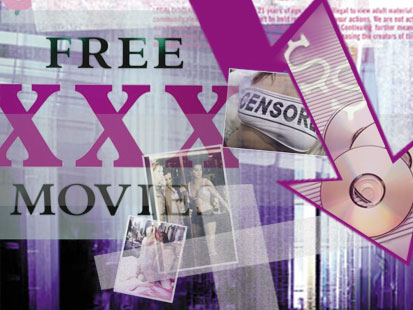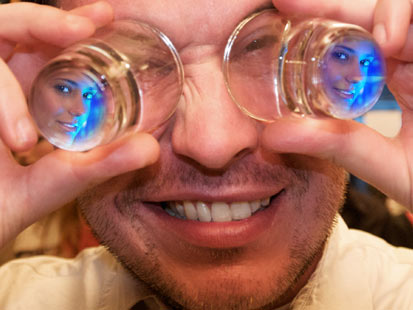'Obvious' Studies? Cheap Beer Makes College Students Drink More
Some studies seem to be no-brainers, but scientists say the findings are useful.
Sept. 2, 2009— -- The cheaper the beer, the more of it that college students will drink. Men are more open than women to a stranger's proposition for sex. The opposite sex looks more attractive after a few drinks.
To many, the above statements may seem obvious. But to some researchers, they may be the starting point for months of study, culminating in published research.
But is such research worth the time, effort and money that goes into it?
For some topics, the surprising answer may be yes. In the case of the study concerning the relationship between alcohol prices and college drinking, the researchers say that a greater understanding of this relationship could help foster more knowledge of alcohol use in general among college students – and potentially save thousands of students from death and injury from alcohol-related mishaps.
In other cases, however, the exact aim of research may be an enigma.
"There's plenty of research out there that doesn't need to be done, and why somebody funds it is one of the great mysteries of life," said Merrill Goozner, director of the integrity in science project at the Center for Science in the Public Interest.
Marc Abrahams, editor of Improbable Research, an organization that tracks unusual research studies, said that with thousands of medical journals published in the United States, part of the reason there are so many studies is simply because of the way academia works.
"In order to get hired, in order to keep your job and to get promoted, you have to publish a lot of studies," Abrahams told ABCNews.com. "There are an awful lot of studies that were done apparently because somebody needed to get some more things on their resume."
The following pages take a look at some of the research that has covered what some would call common knowledge. But what you read may surprise you.
The Cheaper the Beer, the More College Students Drink
When the price of booze goes up, college students will drink less of it -- and they'll be less likely to leave a saloon drunk, according to a survey of patrons leaving college area bars in Florida.
Even slight increases in the price of drinks led to decreases in the quantity of alcohol consumed, according to Ryan O'Mara and colleagues from the University of Florida in Gainesville in research reported online Tuesday in the journal Alcoholism: Clinical and Experimental Research.

The cost per gram of alcohol predicted drinking habits even after researchers adjusted for other factors such as gender, body mass index, and the "intention to get drunk."
The findings of the study may seem obvious to those with hazy memories of their college exploits. However, the researchers went one step further by quantifying exactly how cost could affect problem drinking among college students.
They found that a 10-cent increase in cost per gram of alcohol -- an increase of $1.40 in the price of a drink -- was associated with a 30 percent reduction in the risk of a student leaving a drinking establishment with a blood level greater 0.08, which is the legal limit for driving in many states.
Alcohol use among college students is associated with an estimated 1,400 deaths each year, along with hundreds of thousands of injuries, assaults, and incidents of unprotected sex, the authors noted. And while many past studies have found relationships between alcohol prices and consumption, none before had looked at the effects of prices on individual behavior.
Indeed the researchers spared no effort to examine the phenomenon. O'Mara and his colleagues issued questionnaires to 804 patrons as they exited seven different bars between 10 p.m. and 3 a.m. over four consecutive nights in April 2008.
Participants provided information about the quantity, type, and cost of drinks they had consumed during the evening, both on and off-premises, in anonymous questionnaires. Then each took a breath test.
What the researchers found was that subjects whose blood alcohol levels were relatively low -- zero to .019 -- spent an average of 31.7 cents per gram on ethanol, or $4.44 per drink. On the other end, those whose blood alcohol levels were high -- 0.160 to 0.199 -- spent only 12.9 cents per gram, or $1.81 per drink.
This corroborated the researchers' previous finding that "all you can drink" promotions can lead to excessive alcohol consumption, as the unit price decreases with each drink consumed. And the study suggests that "raising alcoholic beverage prices by tax increases and stricter regulation of drink discounting practices could have a substantial public health benefit," the investigators wrote.
For the college students involved, there were some perks for their participation – including a t-shirt emblazoned with the words: "Alcohol Research Subject."
Porn Sexually Arouses Women
Research that explores commonly known phenomena is one thing. But when government money is involved, the debate over some studies can get heated.
The National Institutes of Health has an annual budget of $29.5 billion. The overwhelming majority of that money goes out in grants to researchers around the country and funds the agency's internal research.

The average amount awarded in research grants last year was $403,528. Most grants tend to cover broad research topics, making it difficult to zero in on the cost of a specific paper or study.
Still, these studies occasionally raise a few politicians' eyebrows.
A few years ago, NIH gave a $147,000 grant to a Northwestern University psychology professor who was paying women to view pornography while a device measured their sexual responses.
What the researchers found in the 2003 study was that women, like men, tend to become aroused by pornography – and unlike most men, they are turned on by both male and female erotica, suggesting that a bisexual arousal pattern.
It was a study that the researchers said had important implications for understanding the development of sexual orientation. But it was also a study that didn't go over too well in the halls of Congress.
Arizona Rep. Jeff Flake was among 20 Republicans to sign a letter to NIH's director asking for an explanation for why taxpayer money was going for such a study. They called it "a bizarre spending decision."
Today, Flake believes Congress has failed to properly oversee NIH and its spending.
"It's Congress' job to set guidelines for how NIH and other agencies spend taxpayer money and then exercise oversight to ensure that those guidelines are being followed. "However, over the last several years, Congress has neglected its oversight function," Flake's office told ABC News. "It's difficult for Congress to criticize NIH for wasteful grants when Congress itself is earmarking billions of dollars every year on similarly wasteful pet projects."
A spokesman for NIH declined to comment about studies that some consider a waste of tax dollars.
While discovering whether porn arouses women may not seem to warrant a hefty price tag, Goozner pointed out that you never know when something seemingly silly could lead to the next miracle discovery.
"Certainly, some of these questions are more significant than they are made to appear when they're poked fun at," he said. Any outrage over government-funded research, from both Congress and watchdogs, tends to focus on industry-financed research, he said. "Industry funds a lot of research that often helps its bottom line. That shouldn't surprise anyone," Goozner said.
Sen. Charles E. Grassley, R-Iowa, has criticized NIH and the way the agency handles its grants. Grassley recently said the agency failed to oversee conflicts of interest in its grants. Many of those grant recipients also get money from drug companies. Grassley has accused NIH of not doing a proper job of requiring all of its grant recipients to also disclose their other funding sources.
Grassley's office declined comment for this story, but in a letter to the Senate Appropriations Committee, the senator wrote, "Researchers need to be put on notice that government grants come with obligations of financial disclosure."
Random Sex: Men More Likely to Say Yes
In a 1989 study by two state college professors, titled Gender Differences in Receptivity to Sexual Offers and published in the Journal of Psychology and Human Sexuality, men and women were asked to randomly approach strangers of the opposite sex on a college campus and say: "I have been noticing you around campus. I find you to be very attractive," and then invite the strangers to have sex.
Guess what? "The great majority of men were willing to have a sexual liaison with the women who approached them," the study determined. "Not one woman agreed to a sexual liaison."

Abrahams said there's some questions that people really want answered, but there "are also a lot of studies that, to me, don't seem to be done for any reason."
Referencing the random sex study, he said, "It's still hard to figure out: What did they hope to learn by this?"
But he also cautioned that just because a study seems frivolous doesn't mean that it doesn't have any merit -- it might just be hard to understand the value now. Scientists who worked on electricity, the telephone or the Internet planned and studied for years before the fruits of their labor were realized.
The rules of science dictate that even the most common sense understanding must be proved, including things that sound logical or appear to be common sense.
"People study things because they are trying to understand things they don't," Abrahams said. "There are often a lot of problems that seem trivial, unless you happen to encounter it. If you or a relative get that disease, then it becomes the most important thing in the world."
Beer Goggles Really Exist
Such research is not just happening in the United States. In Great Britain -- home to roughly 58,000 pubs -- a researcher published a study in August 2008 that determined that drunken women find men more attractive.
Marcus Munafo, a researcher in experimental psychology at the University of Bristol in England, funded his study through a $60,000 grant from the Alcohol Education and Research and Council, a group founded by the British Parliament.

Munafo concluded that with just a little bit of alcohol consumed in a short period of time, people find others roughly 10 percent more attractive than when they are sober.
The results of the study indicate that as little as a large glass of wine or a pint-and-a-half of beer is enough to make the girl or guy sitting on the bar stool next to you appear more attractive than you might otherwise think.
Munafo said the research is part of a wider program of studies looking at how alcohol modifies face perception and "cost almost nothing." He said his research is really focused on the behaviors that are more common after drinking, such as unsafe sex or violence.
"Our hypothesis," he said, "is that this might in part be because we begin to process emotional cues in faces differently after we've consumed alcohol."
Reports from MedPage Today contributed to this article.